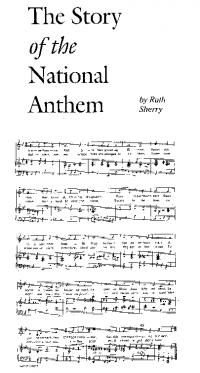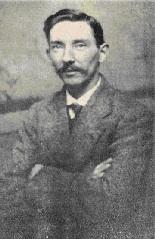countdown to 2016 : A Soldier’s Song/ Amhrán na bhFiann
Published in 20th-century / Contemporary History, General, Issue 2 (March/April 2013), Reviews, Volume 21
Sheet music of A Soldier’s Song/ Amhrán na bhFiann—Peadar Kearney wrote the words (in English) in 1907; Paddy Heaney, and possibly Seán Rogan, helped him with the music.
In the early years of the twentieth century the common ‘marching songs’ for nationalists were T.D. Sullivan’s God Save Ireland and Thomas Davis’s A Nation Once Again, both of which were identified with the Irish Parliamentary Party.
By 1907 Peadar Kearney (Peadar Ó Cearnaigh) wanted to write something more rousing and original. Along with Paddy Heaney, Kearney’s childhood pal, who collaborated with him in writing the music, Kearney wrote the words to A Soldier’s Song. (There is evidence that Seán Rogan may have assisted with the music.) According to Seámus de Burca, Kearney’s nephew, Paddy Heaney ‘worked on the melody for a week and gave up in despair when halfway through the chorus—his inspiration had failed’. When Kearney called to see him on a Sunday morning at his home on Mecklenburg Street in Dublin, Heaney was dejected. Kearney asked him how the music was coming along and for a reply Heaney threw the manuscript in the fire. Kearney snatched it out and smoothed it on the table. ‘The tune was all right, but the chorus was all wrong. They went over the words and Kearney suggested they go back on the melody of the verse. So Heaney toned out the tune and Kearney lilted the words. And thus A Soldier’s Song was written.’ The song was written in English and translated into Irish by Liam Ó Rinn.
Kearney was born at 68 Dorset Street Lower in 1883. A well-known poet and writer, he was a house-painter by trade but preferred to work as a stagehand at the Abbey Theatre. Kearney grew up in the Dolphin’s Barn area, was educated at the Model School, Schoolhouse Lane, and by the Christian Brothers in Marino. He joined the Gaelic League in 1901, and was sworn into the Irish Republican Brotherhood in 1903. Both he and Heaney became members of the Oliver Bond 1798 Club. It was for this club that the pair wrote the song, as Kearney said afterwards ‘in order to impress on Irishmen that they did not have to join the British army to be soldiers’.
Whelan and Son first published A Soldier’s Song in 1908 and sold it at their shop at 17 Ormond Quay Upper. Bulmer Hobson published the song’s lyrics in Irish Freedom in 1912. It was published in sheet form in 1916, with the image of a rifle entwined with Celtic-designed lettering: ‘A Soldier’s Song, Words by Peadar Kearney, Music by Patrick Heaney, arranged by Cathal MacDubhghaill and published by Whelan & Son’.
Though written in 1907, the song was not widely known until it was sung both at the GPO during the Rising and later at various camps where Volunteers/ICA were interned. Soon after, it was adopted as the unofficial national anthem, replacing God Save Ireland. It was not widely known outside the ranks of the military activists until after the Rising, when the music was arranged and published by Victor Herbert in New York in December 1916, with the royalties sent to Kearney and Heaney in Ireland.

Peadar Kearney
In 1934 the Department of Finance acquired the copyright from Kearney for £1,200. But copyright law changed in 1959, so the government had to re-acquire the copyright in 1965, for £2,500. The copyright expired at the end of 2012, the 70th anniversary of Kearney’s death.
It is unclear whether the official anthem is the music alone or the text also, and since no Irish version has been officially adopted, the state does not hold the copyright to any Irish version; thus Ó Rinn, unlike Kearney’s and Heeney’s estates, never received royalties.
Peadar Kearney was arrested and interned in 1920, and was released upon the signing of the Treaty in 1921. He died in comparative poverty at his home in Inchicore, Dublin, in November 1942. A Soldier’s Song/Amhrán na bhFiann was officially recognised as the Irish National Anthem in 1926. HI
Joseph E.A. Connell is the author of Dublin in rebellion: a directory, 1913–1923 (Lilliput Press, 2006).
Further reading
















